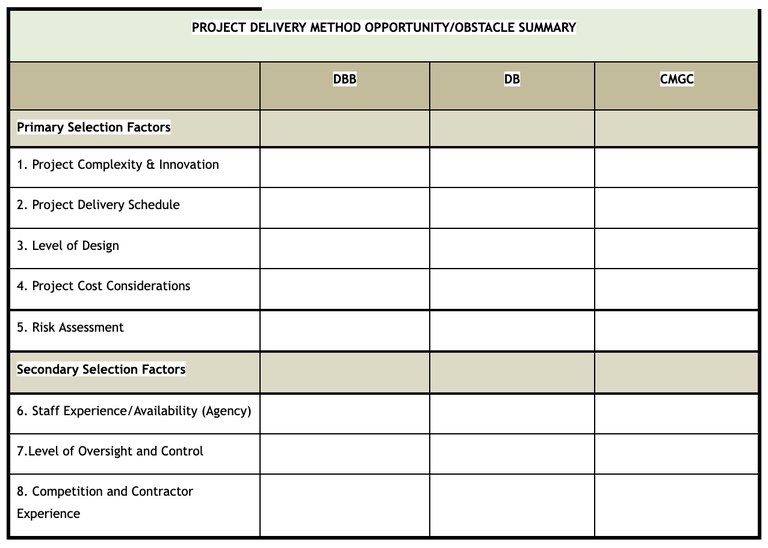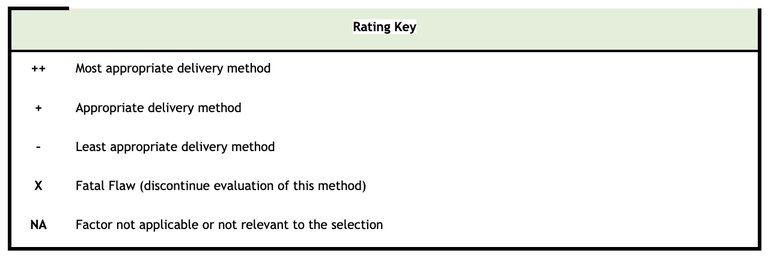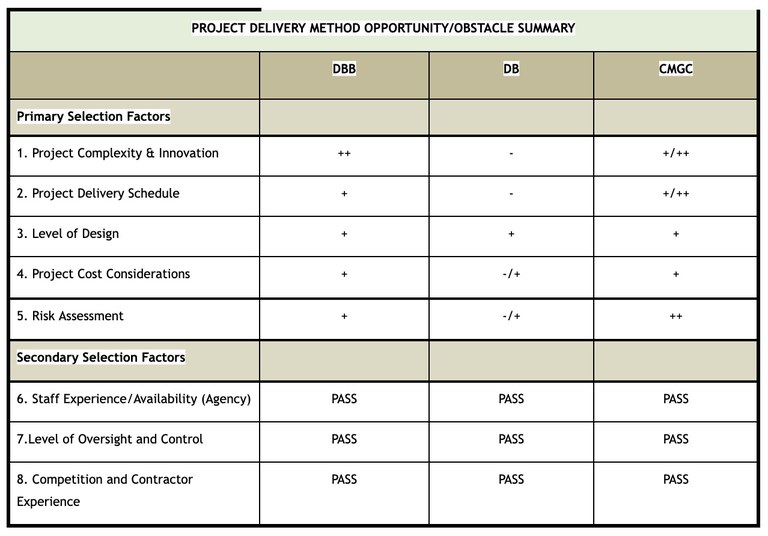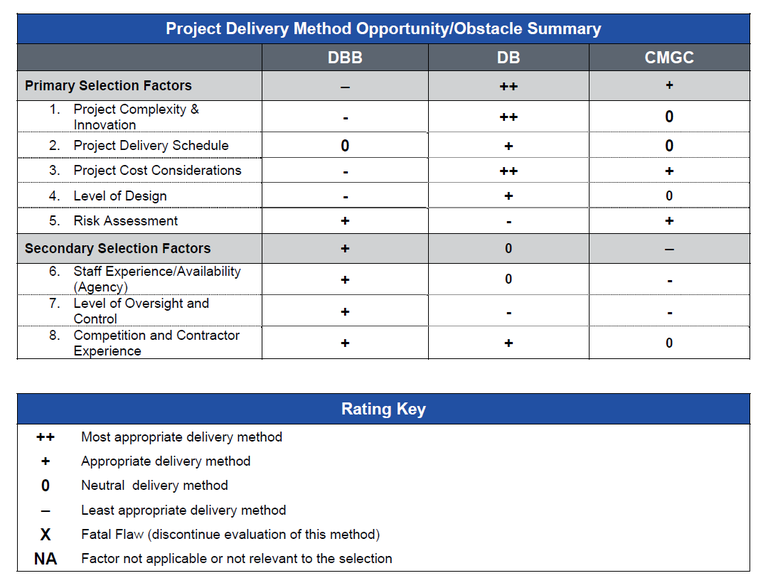Project Delivery
Project Overview
The I-25 North Express Lanes Project, Mead to Fort Collins is broken into three segments:
- Mead to Berthoud
- Berthoud to Johnstown
- Johnstown to Fort Collins
While each segment is part of the same I-25 North corridor, the project delivery method of how the Colorado Department of Transportation brought each segment to life varies.
Prior to any large project delivery, CDOT performs a Project Delivery Selection Matrix (PDSM) to determine the most appropriate, efficient, and cost-effective way to deliver a project by evaluating a Design/Bid/Build (DBB), Construction Manager/General Contractor (CMGC) or Design-Build (DB) delivery. The table below provides an outline of the criteria evaluated. The scoring and outcome of this exercise leads to the delivery type best suited, based on the specifics and goals of the project.

As you travel the I-25 North corridor, you likely will not notice a visual difference between which project is a Design-Build (Johnstown to Ft. Collins) and which is CMGC (Mead to Berthoud and Berthoud to Johnstown) but the contractors, designers, CDOT staff, construction methods, sequencing and resources are all different.
Mead to Berthoud
Construction Manager/General Contractor (CMGC)
The Mead to Berthoud segment received funding to advance forward design and construction. The same design, Construction Management (CM) and CDOT team that is delivering the Berthoud to Johnstown segment is responsible for delivering this Mead to Berthoud segment, under a CMGC project delivery method.
Berthoud to Johnstown
Construction Manager/General Contractor (CMGC)
This project delivery method allows CDOT to contract separately with a designer and a Construction Manager (CM) to provide input during design related to resource availability, means and methods, cost breakdowns and project phasing. The CM has the first chance to bid on the work and has to get within 5% of the Independent Cost Estimator’s (ICE) estimate to be awarded the work, where they then become the General Contractor (GC). If CDOT and the CM cannot reach an agreed-upon price, the work will get bid out for all CDOT-qualified contractors to bid and the lowest-price contractor will be selected.
The significant characteristic of this delivery method is a contract between CDOT and the GC, who will be responsible for the final cost and time of construction. Specific reasons this portion of I-25 was selected were:
- Unknown Funding Availability - At the start of this project, in 2018, this segment of the corridor was not fully funded. This delivery method allowed CDOT to match the scope to the funding, which was developed throughout the design phase and after (the project secured an additional $80 million from 2018 to 2022 to build the necessary scope).
- Quicker Project Delivery - The project team can advance work by breaking elements into various construction packages to allow the contractor to start construction. Instead of delivering the project in a linear manner, the team can overlap phases to have design and construction occur at the same time. Much like the Design-Build (DB) delivery, the project team can work together to identify early work areas and shift resources to zones that are not at risk of delays.
- Risk Mitigation - The project team was able to identify risks on the project and pre-mitigate them or hold a contingency fund for payment if they were realized. The team was able to invest unused risk money to add scope to the project - the new Larimer County Road 16 southbound on-ramp and roundabout!
- Construction Management Input - Including construction industry and contractor input in the design development and constructability of a complex and innovative project like this one saves money and leads to better problem-solving.


Johnstown to Fort Collins
Design-Build (DB)
This project delivery method allows CDOT to procure both design and construction services in the same contract from a single, legal entity referred to as the design-builder. The design-builder controls the details of the design and is responsible for the cost of any errors or omissions encountered in construction.
Some of the benefits of using the Design-Build method on this segment are time, innovation, reduced risk and flexibility. In this delivery method, the Designer works for the Contractor, and a full project design is not needed prior to starting construction. CDOT is procuring one overall contract with the Contractor, rather than procuring a design contract followed by a construction contract, which can save time. By having a Designer working for the Contractor (rather than for CDOT), the Contractor can dictate scheduling, phasing and the best way to get the job done. A Design-Build also grants the Contractor the flexibility to pivot to work best suited for their resources at a given time. For example, if there are delays in one area of the project like utility relocations or right-of-way procurement, work can be re-phased to keep progress moving on another area of the project.

